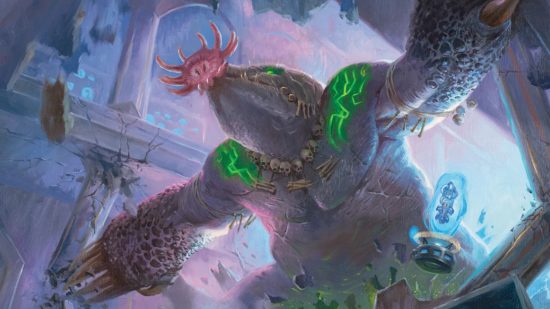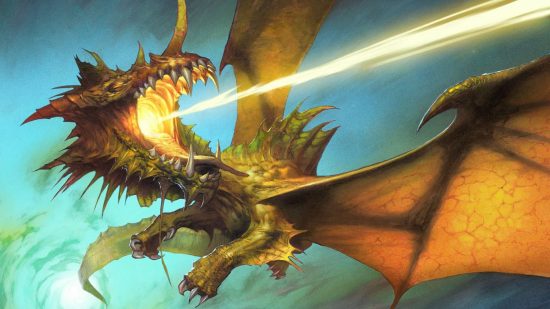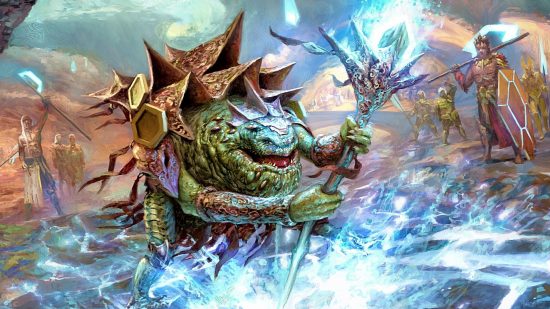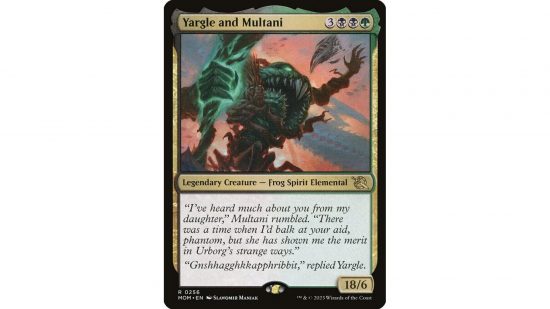MTG commander damage is an alternative way to win games of EDH, or perhaps we should say an alternative way to lose. Here we’ll explain the commander damage rules, and how to build a commander deck to make the most of them.
In most games of Commander, you lose the match when you’re reduced to zero life. However, players can also leverage their commanders to take you out with commander damage. If you are dealt enough damage by the same MTG commander, it doesn’t matter what your life total is, you’ll be out of the game all the same.
So if you’re up against a lifegain deck that just won’t give up, or building around a mighty commander with impressive stats, you could try knocking players out with commander damage.
How much commander damage is lethal?
If you are dealt more than 20 combat damage in the course of a game by the same commander, you lose. There is no way to remove or ‘heal’ commander damage, so don’t expect the MTG Lifelink keyword to save you.
Note that each player’s commander is tracked separately. It’s not 21 damage from commanders plural you have to worry about, it’s 21 damage from the same commander.
MTG commander damage rules
Here we’ll cover some common questions and misconceptions players often have about the commander damage rules.
For instance, most players know that commander damage sticks around regardless of what zone the commander is in. You don’t restart the clock each time a commander is removed and recast. But it’s also worth noting that the damage is applied based on the commander, not the player controlling them.
That means if an opponent’s commander gets taken control of by another player and that player then swings them at you, it’s the same commander, and by extension you use the same pool of commander damage as before it was mind controlled.
Copies of commanders cannot deal commander damage. This is because the attribute of being a commander is specific to the commander card. It is not, as the rules put it, a characteristic of the object represented by the card. This means that while a Clone of a commander does not deal commander damage, a face-down commander does, as does a commander that has lost its abilities through an effect like Frogify or the MTG planeswalker Oko, Thief of Crowns.
Commander damage only comes from combat damage, from the commander attacking a player and getting through. Other damage dealing effects are not relevant. Be aware, however, that commander damage does not nullify regular damage. If you’re sitting, mortally wounded, on five life and a 6/6 commander hits you for the first time, you still die from the regular life loss.
How to win with commander damage
It’s quite difficult to win with commander damage, and you’ll need to build an MTG Commander deck carefully to even make it possible. First off, picking the right Commander is key. You want something with one or more of the following characteristics:
- High power (and, ideally, toughness)
- Evasion (can’t be blocked, flying, trample)
- Protection (hexproof, MTG ward)
- CMC below seven
Few commanders have all of these, but don’t fear. You can load up your commander with various enchantments or bits of MTG equipment to give it everything you need. That’s why this strategy is often called voltron (not to be confused with tron), because you’re assembling all the pieces to form an unstoppable creature.
The rest of your deck should be designed to shore up your commander’s weaknesses based on the chart above, while following normal deckbuilding rules as much as possible (including the right amount of removal, card draw, and MTG mana ramp). You’ll want to buff your commander, so that it can kill in the fewest hits possible, and also make it difficult for your opponents to block or kill it.
Note that haste enablers are really good in Voltron decks because they cut out dead turns where your commander can’t swing. Extra combat step spells are also amazing in this strategy, for obvious reasons.
Voltron is typically considered an aggressive strategy. If you’re winning with MTG commander damage, you’ll want to knock one player out as early as possible. The fewer players left in the game, the less chance you have of running face first into a board wipe.
For more EDH content, here’s how to build a budget Commander deck. And here are the best MTG Commander precons on the market.




